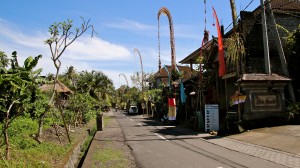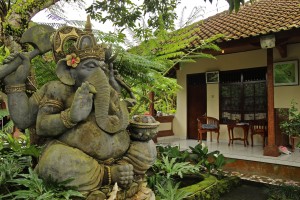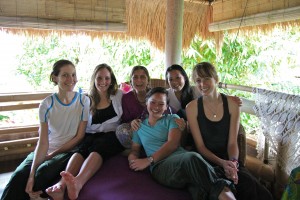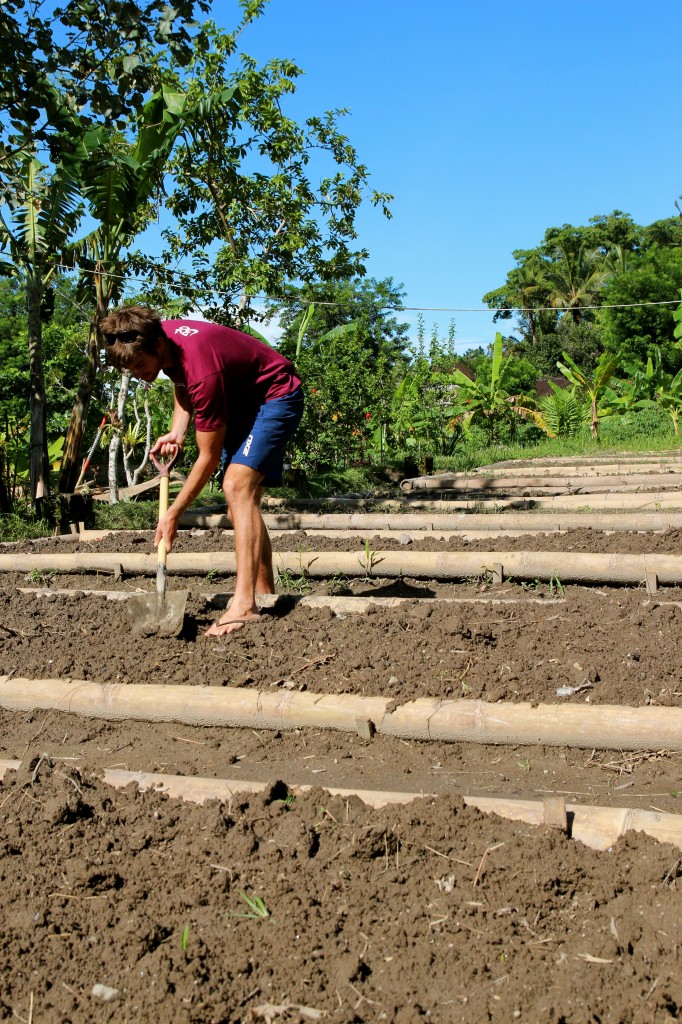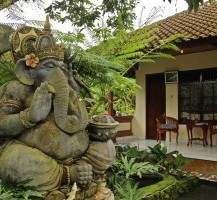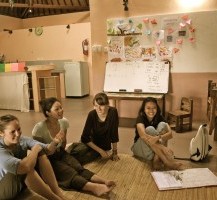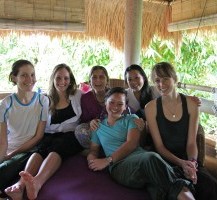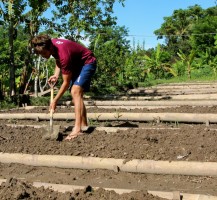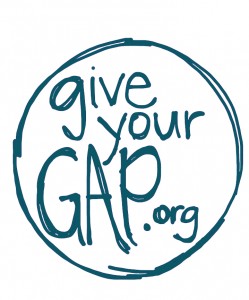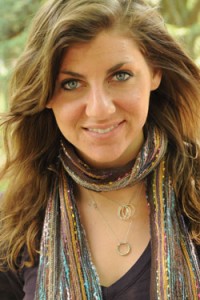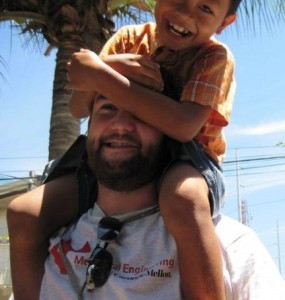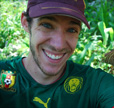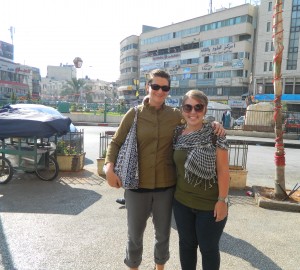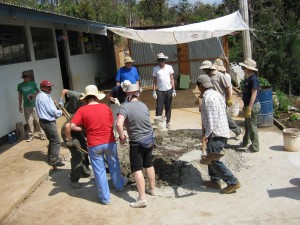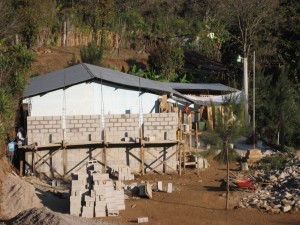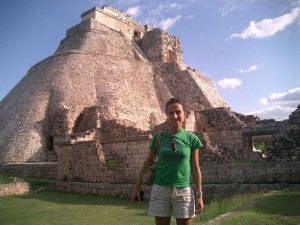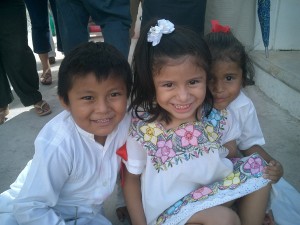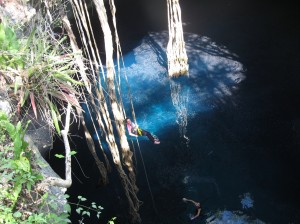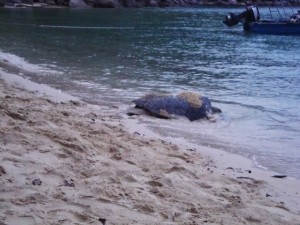The main difference between the town of Ubud and the rest of developed Bali is the sense of calm. It’s noticeable as soon as you enter the city. There’s still noise, the ever present sound of motor bikes and preemptive honking that are ubiquitous to Bali, but it seems quieter, softened.
The Wena homestay where the youth center volunteers stay is located on the smaller street Gootama. We were lucky enough to be able to find a spot there, neighboring the volunteers. The entrance is a small doorway that leads to a path winding around the family temple and past the various apartments of the different family units. It opens up to the guest rooms that surround a courtyard where a serene elephant statue watches over a fountain spilling into a leafy koi pond. Each room has a patio area where breakfast is served every morning.
On Friday we caught a ride in the van with the volunteers to visit the youth center for the last day of classes for the week. We zoomed through town and out to a small surrounding village. The center is located at a pre-school, but the classrooms are free for English and computer classes after the younger children go home in the afternoon. The school is very picturesque: green fields stretch out around it, a few cows meander about, and one of the classrooms has an honest to god thatched roof. It belongs on a postcard.
The staff of the youth center are all from the Ubud area. There are Western volunteers, but no Westerner gets paid. At any time there are around 6 volunteer English teachers from around the world. In Bali the main job market by far is in the tourist industry. The children of the area need to learn English if they have any chance of finding a good job. Here the youth center comes in, offering free after school English classes to local children and young adults.
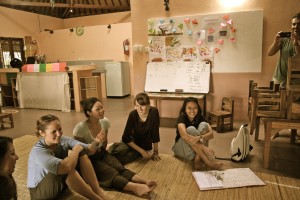
By sitting in on a higher level English class, we got to learn a lot about the local people themselves.
The staff and students were all very sweet and welcoming, perfectly fulfilling the stereotype of the Balinese being the nicest people in the world. We shadowed their classes, filming and joining in for English games.
The following day we had the amazing opportunity to go to the Bumi Sehat natural birthing clinic to meet CNN hero of 2011 and founder of both the clinic and the youth center, Robin Lim (called Ibu, or mother, Robin). Ibu Robin is a midwife. She came to Bali years ago because it had one of the highest rates of infant mortality. She opened her first clinic free of charge to locals, as it and her other clinics remain to this day. Westerners are allowed to use the services too but are asked to make a donation. Mothers stay at the clinic for a few days to make sure they are healthy and can breast feed and then are sent home with cell phones, as most of them don’t have any phones, so they can stay in contact through the first weeks of the babies life. They also provide free confidential HIV/AIDS testing and treatment.
The warmth and good energy emanating from Ibu Robin as she spoke touched us all. She told us about how she saw all these wonderful babies being born but then severely lacking in opportunities for their futures. So she set about to open the youth center, a place where the children she had delivered and others would be able to learn English and better their job possibilities. She has to work every year to raise enough money to keep the clinic open. The youth center is now self-sufficient, funding itself with volunteer fees, 100% of which go to the center itself.
We said our final goodbyes at the clinic and walked a few hundred feet to the new site of the second youth center. This one is still under construction but is being built with a few classrooms and an organic garden so children can learn skills to produce and market produce and how to recycle. All of us are eager to come back and see how it turns out.
As we left Ubud back to the sun and beaches of southern Bali after our few amazing days with Bumi Sehat we were all surprised by how close we had grown to the kids and volunteers at the center and how much we would miss it after leaving. I think we all have a secret wish to come back and volunteer with the center.
Check out our Gapper Video Profile on one of the volunteers at the center, Meredith!

